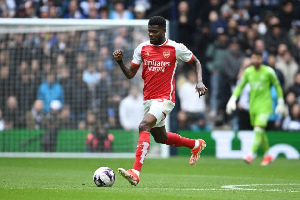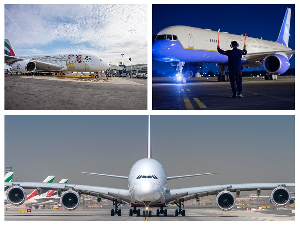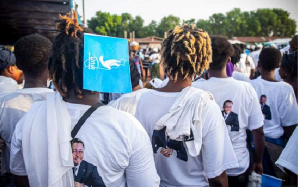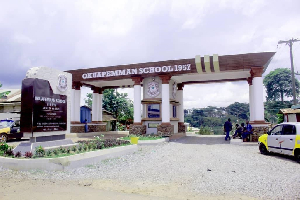- Home - News
- TWI News | TV
- Polls
- Year In Review
- News Archive
- Crime & Punishment
- Politics
- Regional
- Editorial
- Health
- Ghanaians Abroad
- Tabloid
- Africa
- Religion
- Election 2020
- Coronavirus
- News Videos | TV
- Photo Archives
- News Headlines
- Press Release
General News of Thursday, 22 February 2007
Source: Ghana Palaver
Palaver: VRA is broke
---AND VALCO IS THE CHIEF CULPRIT!!
---Electricity cuts to continue!!!
---Tariffs to be increased!!!! Last year, we published a series of analysis in which we warned that the Volta River Authority (VRA) was broke and that if care was not taken, the operations of this indigenous mega-Corporation may grind to a halt. We climaxed the series with the publication of a letter written by Mr. Joshua Ofedie, Chief Executive of the VRA, to the NPP Government in which he pleaded with the Government to absorb the Authority’s indebtedness arising out of the low price of electricity at which it was compelled by the outcome of the NPP Government’s negotiations to sell to Valco.
Our fears and concerns have been confirmed by no less a body than the Joint Supervision Mission of the IDA (International Development Authority) of the World Bank and the EIB (European Investment Bank) which was in the country last month and prepared a Draft Aide Memoire on the Coastal Transmission Backbone Sub-Programme of the West Africa Power Pool (WAPP APLI).
The Aide-Memoire, which may be crisply summarised in the words, “VRA is broke”, makes the following points and raises the following alarms:
• Since 2004, the VRA’s financial performance has deteriorated badly;
• The deterioration is due mainly to the fact that the VRA relies more on thermal power (which uses crude oil) than on hydro power (which uses the water in the Volta Lake) for its power generation and also due to the fact that the VRA has not been allowed to charge consumers the true economic cost of the power it generates;
• If the VRA does not reduce electricity supplies and electricity tariffs are not increased, the financial situation of the VRA will get worse;
• For 2007, the VRA’s financing gap is projected at US$535 million. This is made up of the cost of producing the electricity, which is US$877 million, minus the total sales it will set from electricity supply, which is US$411 million, plus other debt service charges;
• VRA cash reserves were nearly completely depleted at the end of 2006 and without external financial support, the Authority will not be able to continue to operate normally for long;
• As a result of its financial distress, the VRA has broken its performance agreement objectives with the EIB and the World Bank;
• Subsidised sales to VALCO are the major problem. VRA sells power to VALCO at 3 US cents per kilowatt hour whilst it spends 20 US cents to buy emergency thermal power.
According to the IDA and EIB Aide Memoire, if VRA is to bridge the financial gap of US$535 million and be able to operate normally in 2007, then the following steps will have to be taken:
• The Government must pay VRA for the loss incurred in selling power to Valco below cost, totalling about US$62 million;
• The Government must pay VRA for the loss suffered in not allowing the VRA to charge the new tariffs approval by the PURC (Public Utilities Regulatory Commission) in 2006, totalling about US$74 million;
• The Government must recapitalise VRA;
• There must be reduction in the use of electricity;
• Electricity tariffs must be increased. A 30% increased in electricity tariffs will reduce VRA’s estimated revenue loss by US$101 million;
• Energy supply to Valco must be reduced. Valco requires 920 GWh of electricity in 2007. If this is reduced by ?; VRA’s estimated revenue loss will be reduced by US$104 million.
These recommendations are captured in chart form in the Aide Memoire as follows:
Bridging VRA financing gap in 2007
Initial Financing Requirement US$535 million
Temporary Reduction of Valco load by ? - US$104 million
Tariff increase by 30% - US$101 million
Residual requirement for budgetary support US$330 million
Next Friday: Ghana Palaver will publish verbatim the IDA and EIB Aide Memoire medium term perspective: the need for cost-recovering electricity prices in Ghana.










